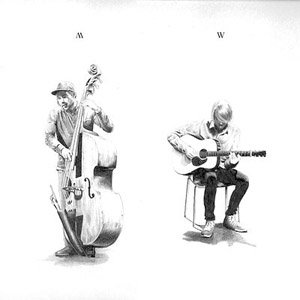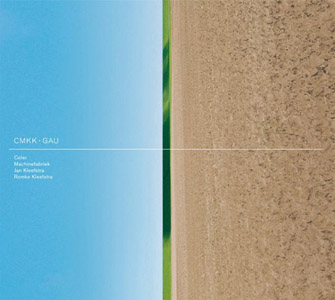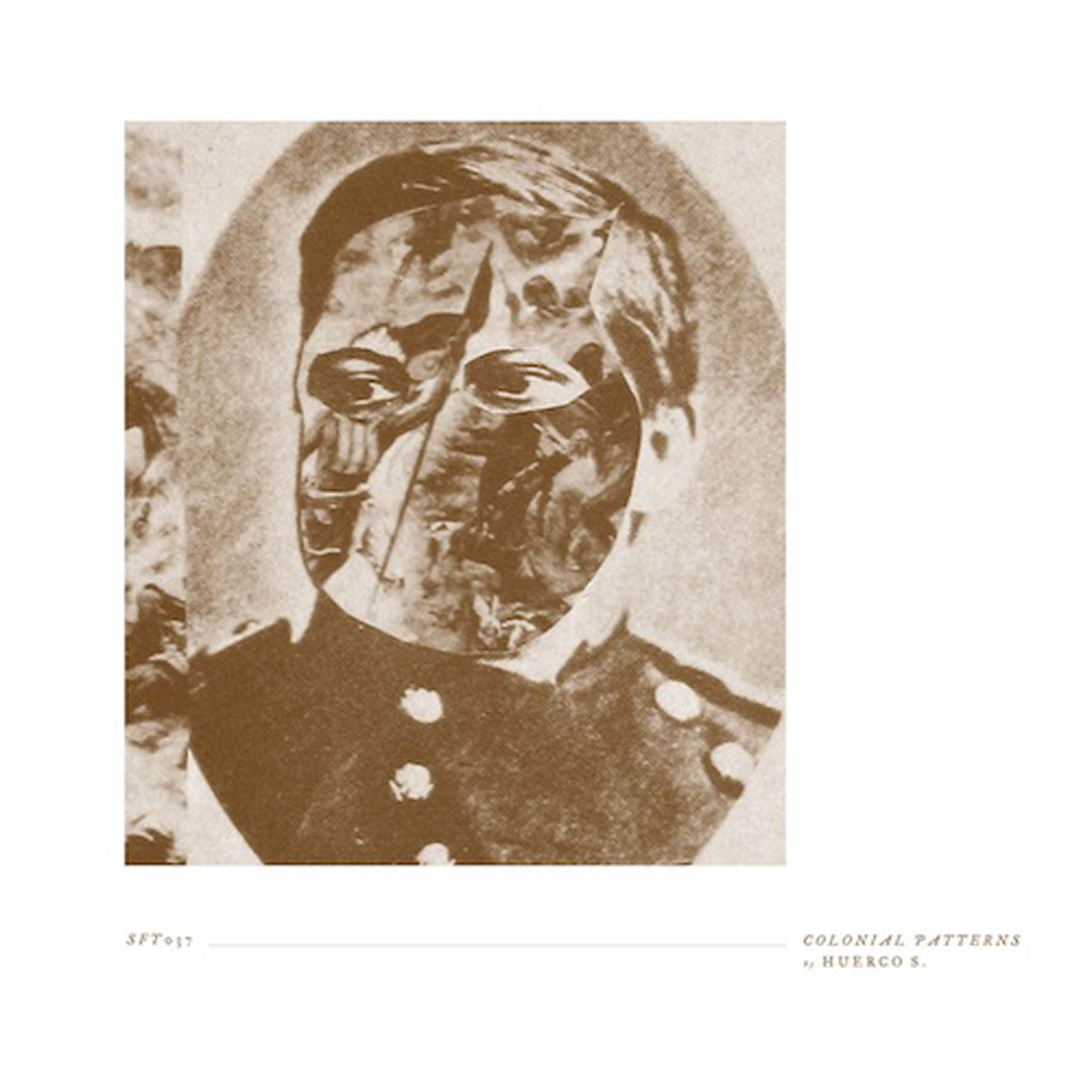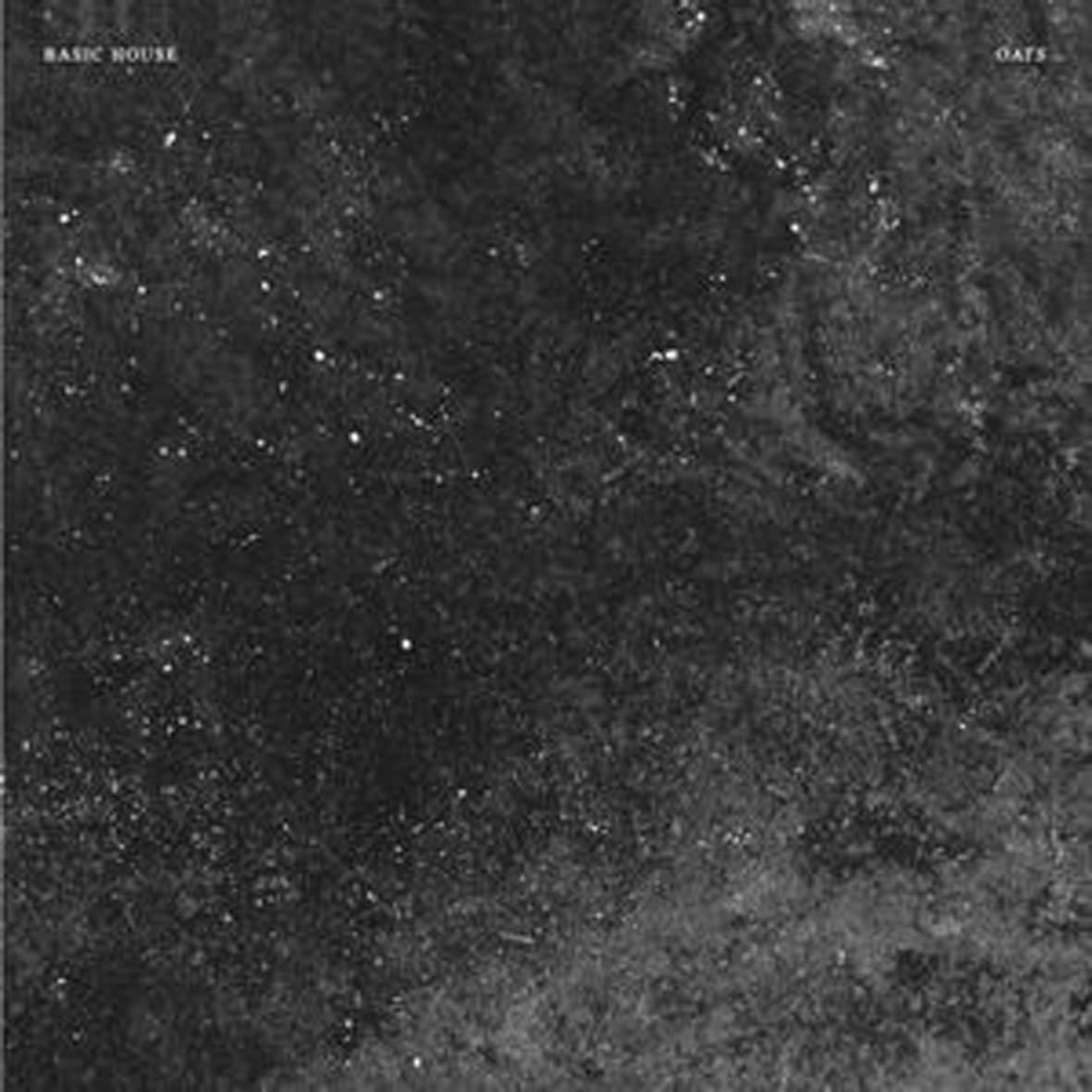- Administrator
- Albums and Singles

In 2005, Sublime Frequencies released Choubi Choubi: Folk and Pop Sounds from Iraq, and in the ensuing years it has become one of the most beloved and venerable titles in their catalog. Now, almost nine years later, this highly anticipated second volume is finally here. Compiler and producer Mark Gergis has once again put forth a revelatory and poignant collection of Iraq's national folk music.
The musical style most prominently focused on in this volume is the infamous Iraqi choubi, (pronounced choe-bee), with its distinct driving rhythm that can feature fiddles, double-reed instruments, bass, keyboards and oud over its signature beat. Choubi is Iraq's version of the regionally popular dabke, another celebratory Levantine folkloric style of rhythm and line dance. What really defines the Iraqi choubi sound are the crisp, rapid-fire machine-gun style percussive rhythms set atop the main beat. To the uninitiated, they sound almost electronic. Sometimes they are, but more often this is the work of the khishba – a unique hand-drum of nomadic origin (aka the zanbour – Arabic for wasp), which appears across the board in many styles of Iraqi music today, with extensions of it also heard in Syrian and Kuwaiti music. Among other styles featured in this volume are Iraq's legendary brand of mawal – an ornamental vocal improvisation that sets the tone of a song, regardless of the style, and the outstanding Iraqi hecha, with its lumbering and determined rhythm pulsing beneath sad, antagonized vocals.
The tracks on this collection were produced during the Saddam era – between the 1980s and early-2000s. An important goal within the Iraqi Baathist agenda was to promote its brand of secularism, which saw the establishment of cultural centres, and a fostering of the arts. Music was more encouraged, albeit more institutionalized than ever – particularly folkloric and heritage music such as choubi. In an Iraqi army comprised of seven divisions, Saddam referred to singers as the eighth. Still, unless a rare level of stardom has been achieved, being a singer or musician isn’t usually encouraged or viewed as a respectable lifestyle in much of the Arab world. It’s often those deemed social outsiders that tend to find their niche in music – particularly the "party music" heard on this collection. Among them are the Rom Gypsy Iraqis (known as Kawliya in Arabic). A number of female singers wear masks and adopt pseudonyms to protect their identities, as some are runaways or prostitutes making ends meet in the seedy nightclub scene. Occasionally, they end up with successful recording careers.
Sajida Obeid, who has appeared on both volumes of Choubi Choubi! is an example of a talented Kawliya singer from the nightclub scene of the 1980s who rose to choubi infamy in Baghdad. Choubi inevitably invokes tawdry connotations within Iraqi society (cheap nightclubs for the lower classes, outcast gypsies and singing prostitutes), but in fact, many calibers of Iraqi singers and ensembles have recorded and performed the music.
Unofficially, choubi can be called the national dance of Iraq. Though some may deny this claim (mostly due to its reputation and stigma), at most Iraqi weddings you'll find people from all walks flaunting their best choubi moves. Iraqi music has always had a way of transcending religious groups and ethnicity, collectively shared between Arabs, Kurds, Assyrians and myriad other Iraqi minorities. In 2013 sadly, this diversity and unity within Iraq is increasingly fragmented, but traditions continue throughout the internationally displaced diaspora.
(Limited edition 2-LP set in heavy gatefold jacket with beautiful artwork and liner notes by Mark Gergis)
Read More
- Administrator
- Albums and Singles
 Two forces define Jason Molina's entire career: work—he was almost obsessively dedicated to his craft—and his band. In 2003 he brought these forces to Steve Albini's Electrical Audio in Chicago and, with nine other musicians, caught lightning in a bottle. Up to that point Molina had made a case for his being a great songwriter, but on Magnolia Electric Co. he became a great bandleader. Those nine other musicians share the spotlight with him on these eight songs, and rightfully so. They're an integral reason Magnolia ended up one of the best rock 'n' roll records ever recorded.
Two forces define Jason Molina's entire career: work—he was almost obsessively dedicated to his craft—and his band. In 2003 he brought these forces to Steve Albini's Electrical Audio in Chicago and, with nine other musicians, caught lightning in a bottle. Up to that point Molina had made a case for his being a great songwriter, but on Magnolia Electric Co. he became a great bandleader. Those nine other musicians share the spotlight with him on these eight songs, and rightfully so. They're an integral reason Magnolia ended up one of the best rock 'n' roll records ever recorded.
From his debut 7" in 1996 until 2003 Jason Molina's band changed with virtually every new release. He played and recorded with Arab Strap, Richard Youngs, Geof Comings, Jonathan Cargill, Mike Mogis, Edith Frost, Dave Fischoff, Alasdair Roberts, and many others; too numerous to count here.
These are the people, as much as Molina, who made Songs: Ohia what it was. Jason knew this and admitted it in various interviews. With Magnolia Electric Co. he acknowledged it, and practically handed the album over this friends and fellow musicians.
The big themes come first: transformation, doubt, partnership, work, and fate—Jason's magical lyricism rides on top of these concerns. He communes with spectral guides and ghostly conspirators; presents deserts, flowers, and ghost towns as trail cairns for lovesick wanderers; and draws Comiskey Park together with the ancient light of distant stars. He writes about broad spaces, thoughts, and inner experiences, and then brings them to life with these details. Until, in the album's penultimate moment, as "John Henry Split My Heart" nearly flies off the rails, Molina reels the band's energy in for just a few lines. In the equivalent of a rock 'n' roll soliloquy, he sings, "Boy what you gonna do with your heart in two?" He replies, "Only if it's good enough, half I'm gonna use to pay this band. Half I'm saving, 'cause I'm gonna owe 'em."
Jason Molina was undoubtedly a great songwriter. As his solo albums, numerous solo bootlegs, and the newly reissued Magnolia demos show, he could carry a song all on his own, sometimes just on the strength of his voice. For the 2003 recording session, he had worked out all the lyrics in advance, knew the basic chords and shapes the songs would take, and maybe even knew how everything would fit together. A few of those songs had been tested on the road the year before too, with a band in tow. But incredibly several of the album's most memorable melodies aren't there in the demos, or even in the pre-album live versions.
Jim Grabowski's floating Wurlitzer accompaniment on "Just Be Simple," Dan Macadam's dancing violin on "The Old Black Hen," Dan Sullivan's angular guitar playing, even Mike Brenner's lap steel lead on "Farewell Transmission"—they were all almost unbelievably invented by the musicians, in the studio, on the spot, without the benefit of knowing the songs well in advance, using overdubs to fix mistakes, or having rehearsal time. Jason wasn't kidding about owing them.
That spontaneity gives the music its loose, anything-could-happen feel; the sort of rambling, improvisational quality that causes listeners to draw connections to country and gospel music when they hear the album. Molina's ideas, what he brought to the table as a writer, pull the record in the opposite direction. He's the one that makes the music sound tightly wound; it's his ability as a leader that makes it all sound inevitable.
And that says nothing of the incredible rhythm section Jason had in Jeff Panall and Rob Sullivan, or of Jennie Benford's haunting harmonies, or of spectacular start on side B, where he gives up the mic to Lawrence Peters and Scout Niblett on "The Old Black Hen" and "Peoria Lunch Box Blues." Jason disappears into both of those songs, making it hard to say where he even is in the mix. They're his songs sure enough, but it's the team that's making them sing. Other bands have worked in a similar way, but few have left so much to the fates and come out the other end with an album that sounds as confident and energetic as Magnolia Electric Co.
To the inclusion of the reissued demos, this 10th anniversary edition adds two studio recordings; one brand new, one difficult to find until now. Acoustic versions for both songs were featured on the demo disc in the album's limited first edition, but the big draw for anyone who has those already are these studio additions. "The Big Game Is Every Night" was previously available on the Japanese edition of the album, but thank God it's finally available domestically because it's stunning, and almost perfectly embodies the entire album. Above a dark, swirling mass of droning strings, Molina delivers urgent line after urgent line of historical images, references, and self-accusations that only he could have imagined. Cutting it from the record must have been painful, but it's such a massive black hole of a tune that it would have swallowed all the light around it. It makes perfect sense on it's own, after the album has ended, or on the 10" that comes with the vinyl version.
"Whip-Poor-Will," on the other hand, falls a bit flat. The demo version is great, and the studio treatment it received on Josephine is heart-rending, but the Magnolia version simply sounds incomplete, as if Jason and Jennie Benford had a good idea, but couldn't find a way to make it work with the time they had.
Hearing it reinforces just how perfect everything else is. Unbelievable is a good word for it, and maybe lucky too. But good bands make their own luck, and this band was as good as they come. As good as the ones Dylan had in '64 and '65, as rough and powerful as Crazy Horse, at times as heavy and as energetic as Hendrix, Redding, and Mitchell. Together, these ten musicians could go toe to toe with anyone, and that's not hyperbole. Make no doubt about it, it's a fact; true like the solid earth. All you have to do to know it is listen.
 
samples:
 
Read More
- Administrator
- Albums and Singles
 In all the time that I have spent writing record reviews, I do not think I have ever been able to say that a band has burst onto the scene without the use of ironic quotation marks, but I think this French trio finally warrants it: three weeks ago I had never heard of Oiseux-Tempête and today I am saying that they have made the single most exciting and bad-ass post-rock album since...uh...well...I cannot even remember the last time there was a great post-rock album. In any case, this epic favorably calls to mind all the ambition, urgency, and cinematic scope that characterized Godspeed! You Black Emperor's debut.
In all the time that I have spent writing record reviews, I do not think I have ever been able to say that a band has burst onto the scene without the use of ironic quotation marks, but I think this French trio finally warrants it: three weeks ago I had never heard of Oiseux-Tempête and today I am saying that they have made the single most exciting and bad-ass post-rock album since...uh...well...I cannot even remember the last time there was a great post-rock album. In any case, this epic favorably calls to mind all the ambition, urgency, and cinematic scope that characterized Godspeed! You Black Emperor's debut.
It is probably impossible to avoid discussing this album without repeatedly mentioning Godspeed, but the reason behind that is not due to any sort of slavish emulation or even a close resemblance between the two bands musically.  If anything, Oiseux-Tempête ("storm of birds") sound far more like a snarling, heavier twist on Explosions in the Sky mingled with more abstract drone- and field-recording-influenced soundscapes.  Godspeed's penchants for both strings and unrepentant degrees of bombast are (mostly) nowhere to be found here.  Nevertheless, the two bands share a lot of common ground in regard to inspiration, conceptual underpinning, and sense of purpose.  For example, this album's stated theme is nothing less than a "sonic odyssey" through "the qualms and queries of a sickly and dysfunctional Western society."  Also, Oiseux-Tempête is creatively interwined with filmmaker Stéphane C, who is documenting the "modern maelstrom" of Greece's gradual collapse.  This is a multi-disciplinary rock polemic, man.
Of course, none of those themes are explicitly conveyed through the actual music, though the album is peppered with various speech and news report recordings in case obsessive multilingual listeners want to appreciate it all on a much deeper and more profound level than I did.  For the rest of us, the band's passionate interest in the escalating unraveling of European civilization is important mostly because it inspired Oiseux-Tempête to create such a wonderful album.  Great art tends to happen when people feel very intensely about something, but that art is often even better when it is still abstract enough to resonate in a more universal way.  That is what is happening here–it is highly unlikely that I will become deeply immersed in the fate of Greece anytime soon, but this was certainly an inspiring, thought-stirring effort in a more general sense.
Musically, this sprawling double-album offers quite a bit to digest.  The band's raison d'être seems to be the soaring and atmospheric tremelo-picked guitar work of Frédéric Oberland, which favorably calls to mind both Tarantel and the aforementioned Explosions.  There is certainly no shortage of music in that vein and Oiseaux-Tempête are very good at it, skillfully avoiding any unnecessary clutter or go-nowhere improvisations and making the most out of their solid rhythm section (which unexpectedly features occasional Marissa Nadler/Beach House drummer Ben McConnell).  The best moments, however, are the ones where the trio twist that formula a bit by adding a bit more bite to the guitars than I expected, like the snarling, noisy stabs that enhance the opening "Opening Theme (Ablaze in the Distance)."  Album centerpiece "Ouroboros" is similarly inspired, opening with rattling strings and ending with a full-on guitar supernova.
Another thing I greatly appreciate is this band's talent for more abstract soundscapes built upon throbbing synths, shimmering processed guitars, and found sounds.  Oiseux-Tempête are rarely content with static drones or lush textures alone,  as pieces like "L'ile" are even more vibrant and dynamically compelling than the band's rock epics (they make up for lack of muscle in other ways). The trio also has a real gift for subtle psychedelia, which they display most beautifully in "Silencer," bolstering their clean, bittersweet arpeggios with woozy organ-like swells and an escalating crackle.  The opening of "Nuage Noir" is similarly beguiling, turning a somewhat banal spoken-word passage into something quite haunting with an eerily blurry bed of twinkling music-box-like tones.
If this album has a flaw, it is only that there is too much of it: I am rarely able to make it through its entirely in one sitting.  I have mixed feelings about that though.  If it were pared down to just a single LP, it would probably be a start-to-finish masterpiece.  However, it would also feel less like a bold statement of intent/uncompromising tour de force than it does now, which would be a bit of a shame.  Also, there is very little material present that could reasonably be identified as "filler": there are admittedly some very similar-sounding songs, but they all make a strong case for themselves on an individual basis.  And they combine for a very well-sequenced and powerful whole, even if it is a bit overwhelming.  This truly is a great album.  If anybody else has released a more impressive debut this year, I certainly have not heard it.
 
Read More
- Administrator
- Albums and Singles
 Neither Christian Winther nor Christian Meaas Svendsen are newcomers within the Norwegian improvised music scene, but this double disc set marks the first specifically solo releases from the two (albeit with a few collaborative moments as well). With Winther's guitar and Svensden's double bass making for the only instrumentation used, both produce amazing sounds and compositions out of such basic, traditional sources.
Neither Christian Winther nor Christian Meaas Svendsen are newcomers within the Norwegian improvised music scene, but this double disc set marks the first specifically solo releases from the two (albeit with a few collaborative moments as well). With Winther's guitar and Svensden's double bass making for the only instrumentation used, both produce amazing sounds and compositions out of such basic, traditional sources.
Winther's disc of solo acoustic guitar is home to the most conventional sounding moments to be had, and even that is a stretch at best."We Sleep" is made up of short, erratic string strums that become thicker and more intense with each passing second, and "How Rare to Bloom" even goes further and presents the guitar softer and more delicate sounding for its duration."Read" also follows a relatively conventional trajectory, even with a hint of dissonance surrounding it.
It is on songs like "Hair" that Winther coaxes the most unique sounds out of his instrument, and thus his playing makes the piece stand out.Aggressively plucked strings build into a rhythmic foundation while the metallic buzzing of the strings make for a pseudo melody, even though it bares almost no resemblance to a guitar."Backwards" is perhaps the most baffling to me, as it is a rhythmic piece structured from some sort of percussive sounds culled from a guitar that are almost impossible to place, as they do not sound like simply knocking on the instrument’s body. The result of this ambiguity is an inhuman, almost mechanical quality that definitely kept my ear.
Svendsen does similar things for his double bass on his disc, although here with even less touchstones to traditional sounding instrumentation.Only on "Prolonged Dots and Blunted Beams" does it sound like conventional plucked bass strings, but with a significant amount of string bending and stretching, it sounds quite unnatural."Der Runtergang" at first sounds like normal bowed bass strings, but as it slowly gets rawer and looser, the strings become more dissonant and harsh to almost have no resemblance at all to how it began.
He also works in his own unconventional methods of playing his instrument, such as the polyrhythmic "Hobby," which is all deep thuds and taut, percussive taps.Similarly, on "Double Rainbow," the bass is made to generate rhythms, but in this case it more closely resembles an ancient analog drum machine that is eventually balanced out with some obvious string plucks that are played so rapidly to resemble a sequenced synthesizer.
On a few a of the pieces the two collaborate together, with results that cover the gamut of what both artists do on their solo works."Ärt" is all rather delicate guitar and bass string plucks, which is surprisingly relaxing given the pieces that preceded it."Overslept" is the exact opposite, with both creating messy clattering noises with their instruments, both by physical impact and string playing, resulting in an intentionally messy free improvisation feel.
Even though they are two distinct solo albums with a small amount of overlap, both Winther and Svendsen take similar approaches to their own instruments and the unconventional misuse of them.For that reason they do feel intrinsically connected in some way, almost as if all of the solo pieces were a psychic collaboration unto themselves with or without the other’s awareness at the time.It makes perfect sense to present these together then, as each disc complements the other beautifully.
samples:
 
Read More
- Administrator
- Albums and Singles
 Recorded near the end of a European tour, Gau is the collaboration of Will Long (Celer), Rutger Zuydervelt (Machinefabrik), and brothers Jan and Romke Kleefstra. Although on their own these artists tend to work in quiet, sparse sounds, on this single improvised piece all open up quite a bit, bringing with them some forceful, aggressive moments as well as their traditionally restrained ones.
Recorded near the end of a European tour, Gau is the collaboration of Will Long (Celer), Rutger Zuydervelt (Machinefabrik), and brothers Jan and Romke Kleefstra. Although on their own these artists tend to work in quiet, sparse sounds, on this single improvised piece all open up quite a bit, bringing with them some forceful, aggressive moments as well as their traditionally restrained ones.
With its deep, rumbling opening—a field recording of thunder I assume—I at first expected more of the placid, introspective sounds that I have heard from Celer and Machinefabrik before, but once a bit of tortured guitar tone rose up sharply, my expectation changed.Even early in the piece, electronic static and crackles appear to form a dissonant counterpoint to the more musical nature of the guitar and an added synthetic tones.
The combination of the two approaches—musical and abstract—appears repeatedly throughout the nearly 48 minute duration of Gau.Complex loops of samples, laptop noise and found recordings trade off with quiet reverberating tones, as melodic electronics bounce off dissonant guitar noise and squall.It becomes forceful at times, but never aggressive or raw.
Jan Kleefstra's spoken word performance throughout is normally something I would find off-putting or distracting on an album such as this.Given that the rest of the piece is subtle electronics and occasionally boisterous drama, I initially worried that the presence of a human voice would be distracting and shift the focus too greatly, but that ends up not being the case at all.The vocals are performed in Frisian, an uncommon Germanic tongue, and placed tastefully low in the mix.They are not obscured by any means, but feel perfectly appropriate when they do appear.
I admit some trepidation in going into this album, because while I have the utmost appreciation for the work of both Celer and Machinefabrik, both of them tend to work in those delicate, sparse realms of sound that I have become a bit burnt out on as a genre.In this collaborative setting, with the two Kleefstras, the result is a bit more jagged and abrasive and therefore hit me as being fresh and different than what I expected.Gau does an exemplary job bouncing between the pensive and the ragged moments, and it is that unpredictability that is its greatest asset.
samples:
 
Read More
- Administrator
- Albums and Singles
My Cat Is An Alien have just finalized their most extreme work to date: 'PSYCHO-SYSTEM' is a 6 CD Box + Digital Download released by Elliptical Noise Records (Canada), representing the most advanced expression of their current creative method of composition through the brothers' brand new self-made strings and electronic instrumentation. An explicit warning reads that "prolonged exposure to sounds and high volume listening can cause episodes of psychotic break with reality, hallucinations, schizophrenia, bipolar disorders, catatonia." Watch the official trailer by Roberto Opalio.

More information can be found here:
Read More
- Administrator
- Albums and Singles
 This is the debut full-length from Brian Leeds' Huerco S. nom de guerre, one of the most exciting projects to emerge from burgeoning scene surrounding Opal Tapes.  While Leeds does not necessarily offer up anything truly novel, his skill at seamlessly blending together industrial clang, dub techno, hissing Tim Hecker-style ambiance, Boards of Canada-esque warped wooziness, and minimalist underground dance is quite peerless.  This is easily one of my favorite albums of the year.
This is the debut full-length from Brian Leeds' Huerco S. nom de guerre, one of the most exciting projects to emerge from burgeoning scene surrounding Opal Tapes.  While Leeds does not necessarily offer up anything truly novel, his skill at seamlessly blending together industrial clang, dub techno, hissing Tim Hecker-style ambiance, Boards of Canada-esque warped wooziness, and minimalist underground dance is quite peerless.  This is easily one of my favorite albums of the year.
The most immediately striking aspect of Colonial Patterns for me was that it is a mixture of several recognizable and predictable influences that sound so completely natural together that it seems astonishing that no one has thought to combine them before now.  After my initial bewilderment, however, I began to appreciate the incredible amount of craftsmanship and nuance needed to pull off such a feat successfully.  The base ingredients are simple: warmly crackling and sibilant synths; a slow, pulse-like thump; locked-groove-like repetition; and some subtly hallucinatory "damaged tape" effects.  What Leeds does with those various threads is extremely impressive though, as even the haziest bits are sharply realized and there is no clutter or superfluous sound to be found anywhere.  Colonial Patterns is about as deliberate and unerringly chiseled as an album can be, yet never feels suffocatingly or lifelessly overwrought.
Leeds' complete control and thoughtful construction even extends to the sequencing, as he breaks up the album with several different types of pieces, all of which somehow feel thematically and aesthetically consistent.  For example, there are a few great pieces in the aforementioned "Tim Hecker" vein, like the beautiful (but brief) "Chung-Kee Player" and "Monks Mound," which eschew beats for dreamily hissing and pulsing bliss.  Other pieces, such as "Skug Commune" and "Ragtime USA," boast strong enough beats and hooks to qualify as potential singles, but are still understated enough to blend with the rest of the album.  Still other pieces–most of them, actually–recall the late '90s golden age of dub techno artists like Pole and Kit Clayton.
The best and most distinctive pieces, however, are the ones in which Leeds manages to seamlessly blend all of those threads (as well as some others) together at once.  My favorite among them is "Quivira," which deftly blends a lurching, metallic industrial rhythm with warm, scratchy synth swells and obsessively see-sawing blurts.  Another particularly unique piece is "Annagramme of my Love," which embellishes its throbbing beats with little more than crackling static and a buried, stuttering vocal loop.  Brian also does warped-sounding mindfuckery quite well, though only the delirious and wobbly "Prinzif" fully highlights that knack.
Colonial Patterns is the rare album in which I thoroughly enjoy almost every song, no matter how long or short it is or which direction it takes.  The worst thing that I can say about it is that the quality dips a bit near the end, as both "Canticoy" and "Angel (Phase)" allow merely decent ideas unfold much longer than necessary.  Still, 12 excellent songs out of 14 is one hell of an impressive success rate, particularly when the listener is as jaded as I am.  Leeds clearly set out to deliver a flawlessly realized, perfectly flowing masterpiece and came as close as I possibly could have hoped for (uniformly brilliant albums being a truly rare phenomenon in the single-driven world of underground dance).
 
Read More
- Administrator
- Albums and Singles
 Ambiguity hangs from every word that comes out of 25 year old Tahliah Barnett’s mouth. She sings about sex, love, craving, deception—and sounds direct enough doing it—but what she leaves out of her songs is just as important as what she keeps in them. Her accomplice, producer and Yeezus collaborator Arca, couldn't be more sympathetic. He matches her terse, enigmatic professions and weightless melodies with a magic show of slow-motion rhythms and phantom effects, making the best possible use of repetitious forms to emphasize and heighten the drama in her lyrics. EP2 is a pop record, but FKA Twigs and Arca pull it off so spectacularly that it sounds and feels like more.
Ambiguity hangs from every word that comes out of 25 year old Tahliah Barnett’s mouth. She sings about sex, love, craving, deception—and sounds direct enough doing it—but what she leaves out of her songs is just as important as what she keeps in them. Her accomplice, producer and Yeezus collaborator Arca, couldn't be more sympathetic. He matches her terse, enigmatic professions and weightless melodies with a magic show of slow-motion rhythms and phantom effects, making the best possible use of repetitious forms to emphasize and heighten the drama in her lyrics. EP2 is a pop record, but FKA Twigs and Arca pull it off so spectacularly that it sounds and feels like more.
In interviews, FKA Twigs admits that she likes to work quickly. "I don’t like to labour over things," she says. "In my experience, the first idea is usually the best one." That dedication to immediacy is most obvious in her lyrics. On opener "How’s That" Twigs sings a total of about six lines, most of them delivered in fragments: one question, one incomplete thought that could be read sexually or spiritually, and five moaned exclamations, which are repeated incrementally over a voluminous bed of chromatic noise. With every repetition Twigs and Arca add a level of intensity to the sung lines, giving mundane statements like "you know everything" a cathartic insistence and a special emphasis.
That is basically how the duo operates for the entirety of the record. Arca builds a house of mirrors around Twigs’s sparse lyrics, anchors it with a heavy low end, and adds bits of psychedelic color to help play up the uncertainty and immediacy of the written lines. There’s lots of pitch-bending and lurching rhythms, pulses that build pressure and then fizzle out, and awkward movements that stutter and hesitate before finally getting in line. When the strong climaxes do come, they seep into the mix like an injection of molasses. "Papi Pacify" practically explodes during its chorus; strings spasm and double over the top of each other; the wavering melody of the verse turns suddenly confident and dark; the rhythm picks up a thumping persistence, and Twigs’s voice rises to match Arca’s wave of noise.
It all sounds ecstatic, but Barnett avoids the usual love song clichés and digs into the meat of her subjects, pulling out absurdity, contradiction, and bathos for the attentive. She plays on the violent connotations of pacification, leaves the usual inside-outside dichotomy to be read either perversely or transcendentally, and pens a strange encomium to free love, which might also be a condemnation of objectification and prostitution—sexual or otherwise. Her videos, most of which are either directed or co-directed by her, reinforce that multiplicity. In "Papi Pacify" it isn't clear whether she’s being dominated physically or secretly pulling the strings, and "How’s That" treats the human form like an obstacle to something altogether more fluid.
Nothing is as it seems, which is actually a nice summary of the EP. Twigs and Arca are working with a formula everyone knows. It’s pop music. But the way they handle their material disguises that fact. They know the shape and extent of their art, and rather than playing by the rules or trying to bust it wide open, they’re walking a middle path, finding smart ways to stretch, dye, and warp it. It’s tempting to call EP2 experimental, but it’s clear that FKA Twigs knows exactly what she’s doing.
EP2 can be heard in its entirety on Youtube:
 
Read More
- Administrator
- Albums and Singles
Stephen Bishop is best known as the man behind Opal Tapes, but he also releases some very deviant and noteworthy music of his own as the deceptively named Basic House.  While both of these albums were released in 2013, they take Bishop's otherworldly wrongness in two very different directions.  Caim in Bird Form is the much weirder (and arguably more unique) of the two, but the more recent Oats compensates for its comparative lack of derangement by incorporating a heavy noise/industrial influence that yields some impressively brutal results.

Caim has one of the more eerie and wrong-footing openings in my recent memory, as Bishop takes the hackneyed trope of using film dialogue to a bizarre extreme with "Aspirin Telepath."  Aside from some murky, throbbing synths, the piece is little more than a tense monologue pitch-shifted and taken wholesale.  Then that is followed by "I Found U," which opens with a crackling, near-incomprehensible answering machine message.  That message ultimately gives way to something resembling music, but just barely: it features only looped swells of static, a repeating hollow thump, and some uneasy echoing and machine noise.  It is certainly a very sparse and minimalist piece, but it is also quite an enjoyable one, recalling some sort of deep subterranean or sci-fi twist on The Loop Orchestra's mad brilliance.
While part of me hoped the album would continue to sound like an enigmatic radio transmission from deep space forever (or just listening to late night television on lots of hard drugs), the album arguably begins in earnest with the third piece "I Don't Remember Acid."  At the very least, it feels structured and has a clear beat/rhythm of sorts.  Bishop's "songs," however, are not techno/dance in any conventional sense–rather, they are a ruined, rusted, sickly sounding, and grotesque caricature of the genre.  Everything sounds scratchy, queasy, and anemic.  That is, except on the rare occasions when it does not, such as with the bassy, spaced-out dub techno anomaly of "64 Bummer."
While that piece is reassuring in that it shows that Stephen could competently make something more straight-forward if he felt like it, I am (predictably) far more impressed with his more outré excursions, like the blearily dissonant haze of "Field 0.08" or the shivering rhythm in "Ultra-Misted" that gradually degenerates into backwards-sounding whooshes.  Or the beat in the title track, which basically sounds like someone rhythmically sharpening a long knife.
My favorite piece, however, is the closing "TV Illness," which sounds like it appropriates the same string piece used in Severed Heads' "Wonder of All the World."  Bishop takes that beautifully melancholy piece in a very different direction though, as it sounds like it is fitfully reverberating through a cavernous parking garage.  It makes for a very hallucinatory and bittersweet listening experience, which is happily reprised as "In Illness Form," a remix by Scuba Death (the sole real difference being the addition of more hissing and a metallic machine-noise rhythm).
If Caim can be said to have a flaw, it would be that the individual pieces are all based on a few simple, repeating motifs–the sort of thing that other musicians might see as little more than studio experiments or the beginnings of something larger.  That did not bother me at all though, as they cumulatively form one hell of a bizarre and unique album.  Also, anything more elaborate or musical would have ruined my pleasing illusion that these are field recording collages made by a serial killer or madman hiding in a sewer: Caim works so wonderfully precisely because of Bishop's unwavering commitment to his broken, crackling aesthetic of cryptic dispatches.  Stephen certainly recorded some great individual pieces, but Basic House's brilliance lies far more in how it sounds than in the actual beats and notes being played.

Initially, Oats sounds a hell of a lot like its predecessor, as "AR II" offers up a healthy dose of tape hiss and a warbling, obsessively repeating loop.  It quickly makes some surprising updates to Bishop's formula though, as an actual house beat(!) appears alongside some very conventional high-hats and a burbling techno bass line.  That piece turns out to be an aberration in almost every way though, as the rest of the album is rarely that minimal or that straightforwardly musical.  The second piece, "Child Confession," is very much the one that sets the tone of what is to come: dense, murky, crunching soundscapes with subtly hallucinatory synth flourishes and lots of heavy machinery sounds.
The biggest thing that separates Oats from Caim is density: Oats is far more crushing and relentless than broken or crackling.  That difference is embodied nicely by "Interiors," which basically sounds like a fleet of street cleaners plowing through a pig farm.  Such thick, buzzing soundscapes happily make up a significant portion of the album, as Bishop returns to that theme again (minus the pigs) with both "L Wave & Comb" and the roiling factory noise of "Dry Contact."  The remaining pieces are divided up between ominous, pulsing ambient drone ("Time Table" and "Nurse"); haunted, minimalist dub techno variations ("C-Beat" and "La Coccinelle"); and a couple of curious divergences.
The first of Oats' curveballs is "Est Oan," an alternately cartoonish and creepy experiment in pitch-shifted voices amidst brooding dark ambient throbbing and skittering.  The other aberration, however, is the album's masterpiece.  According to Alter's description, "B.G. Feathers" "evokes the grinding power of Maurizio Bianchi's best '80s material," a claim that I will have to take their word for, as I have never heard anything by Bianchi that sounds quite like it.  In any case, it is an absolutely crushing piece and a brilliantly simple one besides: it is essentially just a heavy, endlessly repeating, and blown-out industrial crunch, but the twist is that the crunch is constantly changing in violent ways.  In fact, it often sounds like the tape is literally being shredded, which is an extremely neat trick.  Few things make me happier than gnarled, unrelenting, mechanized crunches at high volume.  It breaks my heart every single day that I do not live in a futuristic dystopia terrorized by mechanized juggernauts, so I deeply appreciate Basic House for at least providing the fleeting illusion of one for me.
Ultimately, Oats hits higher highs than Caim while also being significantly more accessible, as Bishop's more beat-driven pieces offer enough of a semblance of normalcy to probably draw in the more adventurous strain of underground dance enthusiasts (especially given Stephen's role in the scene).  Part of me laments Bishop's evolution a bit though, as Caim in Bird Form was front-to-back otherwordly insanity.  Oats is certainly a logical and impressive leap forward, but Basic House's newfound force and quasi-professionalism necessarily comes at the expense of some of its its rickety predecessor's "outsider art" charm.  I still love both though.
 
 
Read More
- Administrator
- Albums and Singles
[SIC] comes in a handmade cover, each copy individually crafted from recycled plywood and cloth, decorated by use of stencils and printing blocks. Optional second disc [SIC] - Bonus
Three tracks are: 1:Letter from Topor; 2: Eyes of a Scanning Girl; 3: Monsterkamer (Orgasm)
Optional second disc [SIC] - Bonus contains 1: Letter from Topor (Draft); 2: Eyes of a Scannong Girl (Draft). These are different mixes of the tracks on [SIC]. [SIC]
You had to wonder first time through their eyes. Primary means sensory concept. Forty people squashed in a small room. Guy called Bushy played dumb dumb to crowd surfing toilet. Multitude swayed and cried fronting the Chinese rock'n'roll takeaway band. 19 pre-pubescent pterodactyls list vampire records chronologically. Bushy feels they came to be frustrated in new little venues. Procession of bats and traffic in urban sound design.
Acoustic instruments used in creating [SIC] and [SIC] Bonus include: locust pod, reco-reco, atabaque, vozembouch, cuica, hungu, slide carambolade, double breasted field jacket, agogo, caxixi, Shakuhachi, double bass, violin, santoor, zither, chimes, bells, gongs, piano frame, fishing line, didgeridoo, bicycle wheel (alloy), daxophone, chinese metal shaker, conch, piano, sarangi, straw cymbalom, to mention but a few.
[SIC] costs including shipping worldwide € 35.- including shipping worldwide
available from www.aranos.org
Read More
- Administrator
- Albums and Singles
[SIC] comes in a handmade cover, each copy individually crafted from recycled plywood and cloth, decorated by use of stencils and printing blocks. Optional second disc [SIC] - Bonus
Three tracks are: 1:Letter from Topor; 2: Eyes of a Scanning Girl; 3: Monsterkamer (Orgasm)
Optional second disc [SIC] - Bonus contains 1: Letter from Topor (Draft); 2: Eyes of a Scannong Girl (Draft). These are different mixes of the tracks on [SIC]. [SIC]
You had to wonder first time through their eyes. Primary means sensory concept. Forty people squashed in a small room. Guy called Bushy played dumb dumb to crowd surfing toilet. Multitude swayed and cried fronting the Chinese rock'n'roll takeaway band. 19 pre-pubescent pterodactyls list vampire records chronologically. Bushy feels they came to be frustrated in new little venues. Procession of bats and traffic in urban sound design.
Acoustic instruments used in creating [SIC] and [SIC] Bonus include: locust pod, reco-reco, atabaque, vozembouch, cuica, hungu, slide carambolade, double breasted field jacket, agogo, caxixi, Shakuhachi, double bass, violin, santoor, zither, chimes, bells, gongs, piano frame, fishing line, didgeridoo, bicycle wheel (alloy), daxophone, chinese metal shaker, conch, piano, sarangi, straw cymbalom, to mention but a few.
[SIC] costs € 35.- including shipping worldwide
Available from www.aranos.org
Read More

